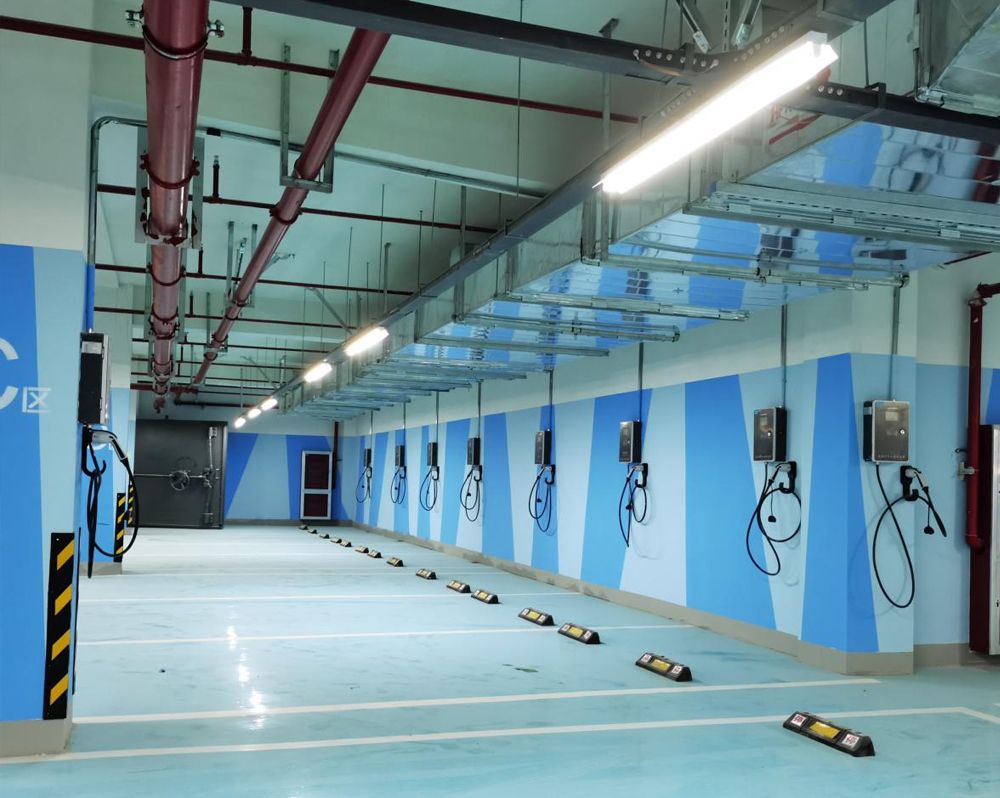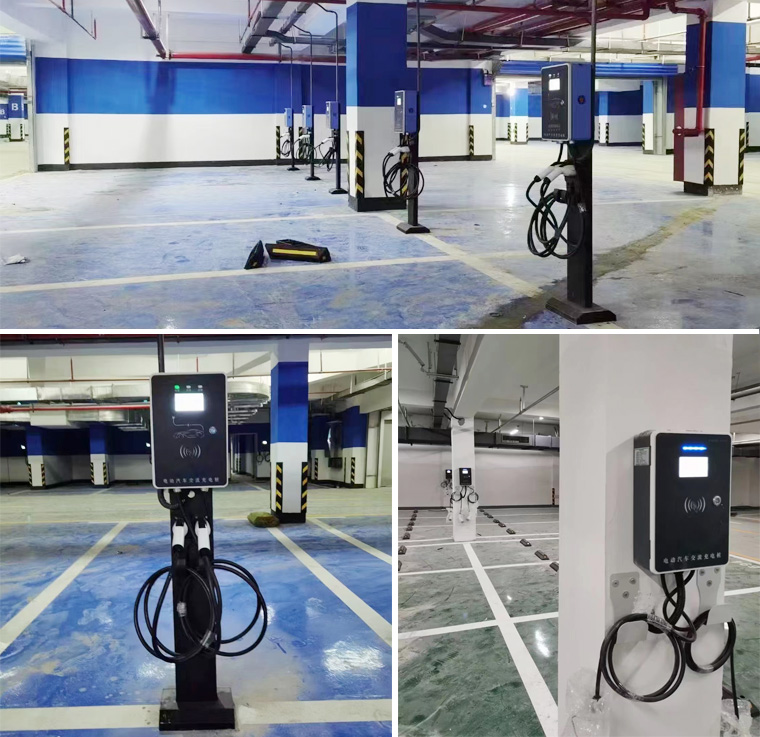With the global emphasis on environmental protection and sustainable development, new energy electric vehicles (EVs), as a representative of low-carbon mobility, are gradually becoming the development direction of the automotive industry in the future. As an important supporting facility for EVs, AC charging piles have attracted a lot of attention in terms of technology, usage scenarios and features.
Technical Principle
AC charging pile, also known as ‘slow charging’ charging pile, its core is a controlled power outlet, the output power is AC form. It mainly transmits 220V/50Hz AC power to the electric vehicle through the power supply line, then adjusts the voltage and rectifies the current through the vehicle’s built-in charger, and finally stores the power in the battery. During the charging process, the AC charging post is more like a power controller, relying on the vehicle’s internal charge management system to control and regulate the current to ensure stability and safety.
Specifically, the AC charging post converts AC power into DC power suitable for the battery system of the electric vehicle and delivers it to the vehicle through the charging interface. The charge management system inside the vehicle finely regulates and monitors the current to ensure battery safety and charging efficiency. In addition, the AC charging post is equipped with a variety of communication interfaces that are widely compatible with the battery management system (BMS) of different vehicle models as well as the protocols of charging management platforms, making the charging process smarter and more convenient.
Usage Scenarios
Due to its technical characteristics and power limitations, the AC charging post is suitable for a variety of charging scenarios, mainly including:
1. Home charging: AC charging piles are suitable for residential homes to provide AC power for electric vehicles with on-board chargers. Vehicle owners can park their electric vehicles in the parking space and connect the on-board charger for charging. Although the charging speed is relatively slow, it is sufficient to meet the needs of daily commuting and short-distance travelling.
2. Commercial car parks: AC charging piles can be installed in commercial car parks to provide charging services for EVs that come to park. The charging piles in this scenario generally have lower power, but can meet the charging needs of drivers for short periods of time, such as shopping and dining.
3. Public charging stations: The government sets up public charging piles in public places, bus stops and motorway service areas to provide charging services for electric vehicles. These charging piles have higher power and can meet the charging needs of different types of electric vehicles.
4. Enterprises and institutions: Enterprises and institutions can install AC charging piles to provide charging services for the electric vehicles of their employees and visitors. The charging pile in this scenario can be configured according to the electricity consumption and vehicle charging demand.
5. Electric vehicle leasing companies: Electric vehicle leasing companies can install AC charging piles in leasing shops or pick-up points to ensure the charging needs of leased vehicles during the leasing period.
Characteristics
Compared with DC charging pile (fast charging), AC charging pile has the following significant features:
1. Smaller power, flexible installation: The power of AC charging piles is generally smaller, with a common power of 3.3 kW and 7 kW, making the installation more flexible and adaptable to the needs of different scenarios.
2. Slow charging speed: limited by the power constraints of vehicle charging equipment, the charging speed of AC charging piles is relatively slow, and it usually takes 6-8 hours to be fully charged, which is suitable for charging at night or parking for a long time.
3. Lower cost: due to the lower power, the manufacturing cost and installation cost of AC charging pile is relatively low, which is more suitable for small-scale applications such as family and commercial places.
4. Safe and reliable: During the charging process, the AC charging pile finely regulates and monitors the current through the charging management system inside the vehicle to ensure the safety and stability of the charging process. At the same time, the charging pile is also equipped with a variety of protection functions, such as preventing over-voltage, under-voltage, overload, short-circuit and power leakage.
5. Friendly human-computer interaction: The human-computer interaction interface of the AC charging post is designed as a large-size LCD colour touch screen, which provides a variety of charging modes to choose from, including quantitative charging, timed charging, quota charging and intelligent charging to full charge mode. Users can view the charging status, charged and remaining charging time, charged and to be charged power and current billing in real time.
In summary, new energy electric vehicle AC charging piles have become an important part of electric vehicle charging facilities due to their mature technology, wide range of usage scenarios, low cost, safety and reliability, and friendly human-computer interaction. With the continuous development of the electric vehicle market, the application scenarios of AC charging piles will be further expanded to provide strong support for the popularisation and sustainable development of electric vehicles.
After reading the whole article, do you have more gains of. If you want to know more, we will see you in the next issue!
Post time: Sep-06-2024






